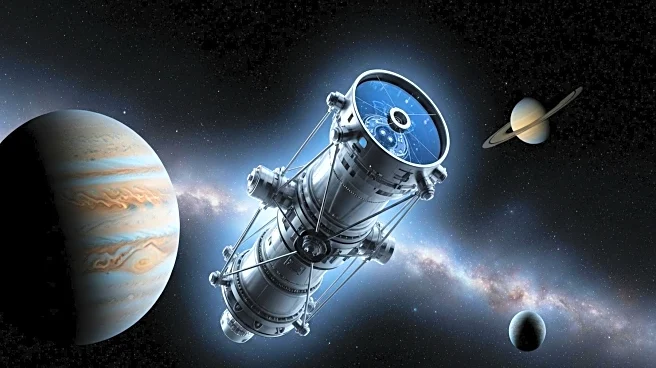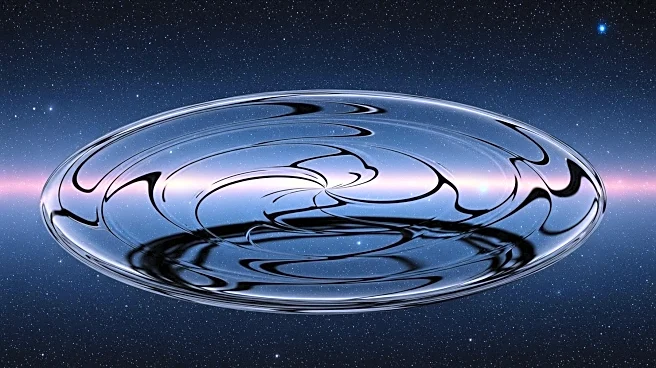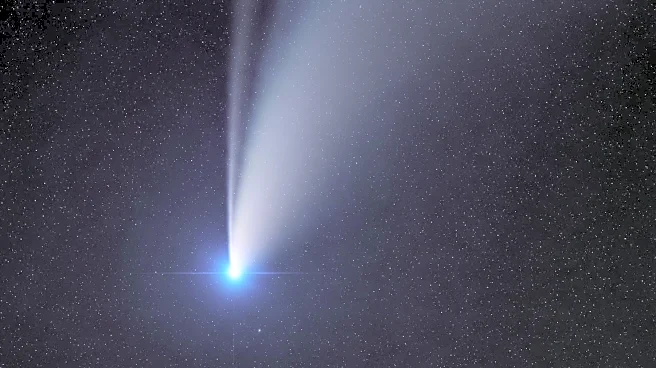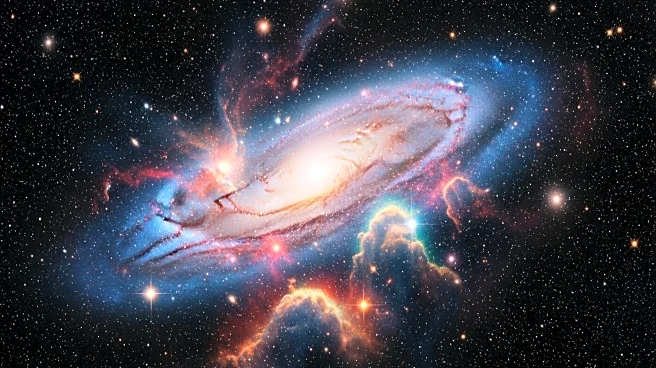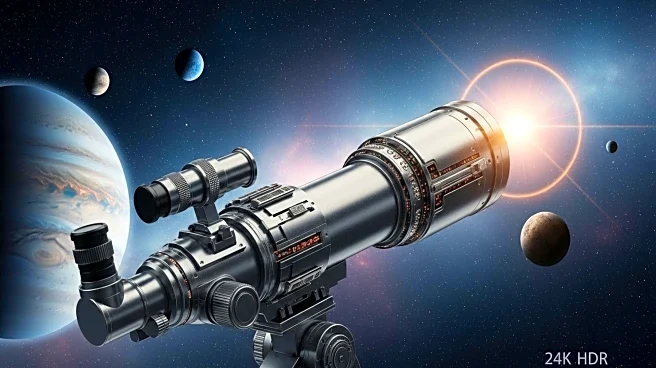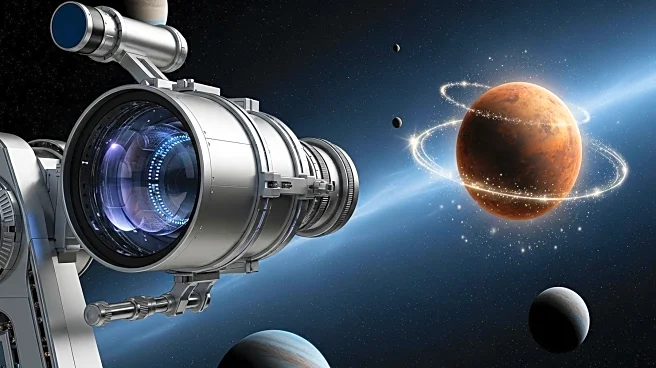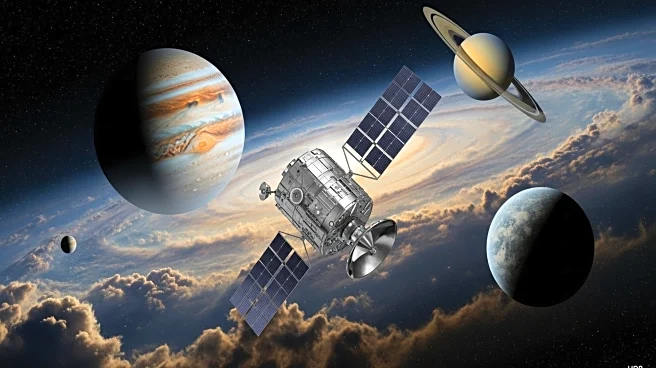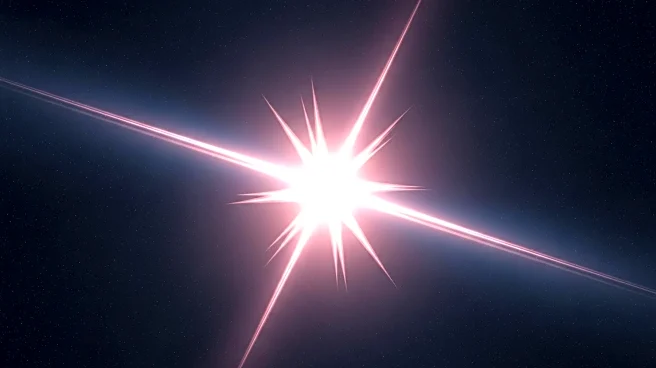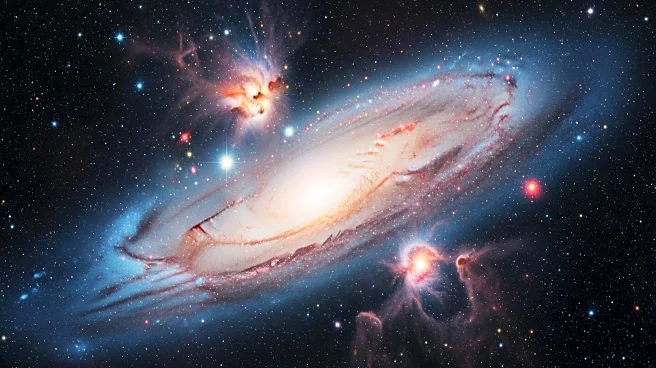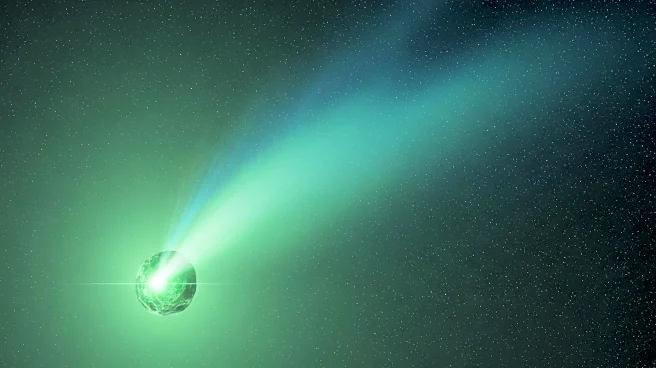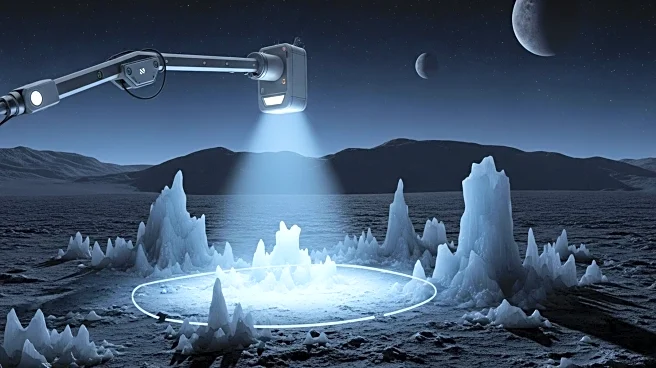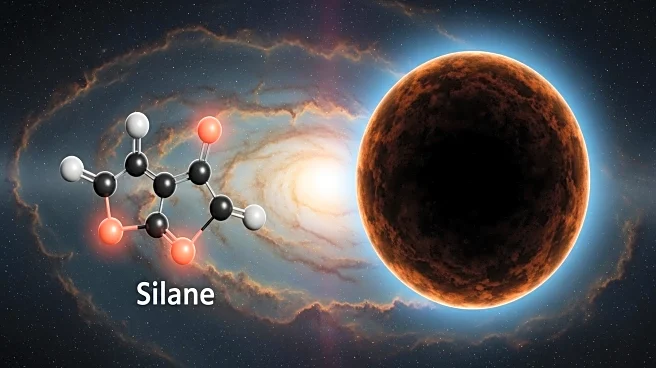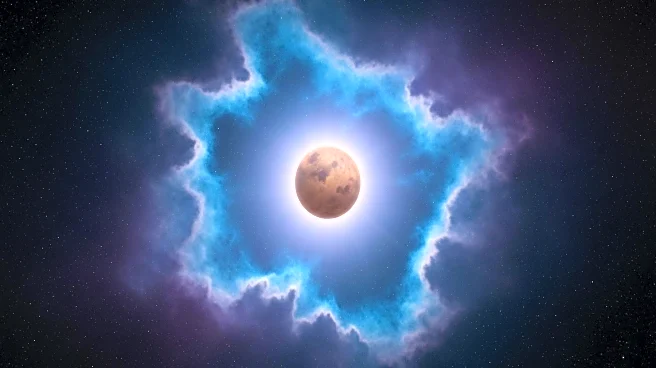What is the story about?
What's Happening?
The James Webb Space Telescope (JWST) is studying a brown dwarf known as 'The Accident' to solve mysteries related to Jupiter and Saturn. Brown dwarfs are 'failed stars' that lack the mass to sustain nuclear fusion. 'The Accident,' located 50 light-years from Earth, is one of the oldest known brown dwarfs, exhibiting features of both young and ancient failed stars. The JWST's investigation revealed the presence of silane, a molecule formed by silicon and hydrogen, which has been elusive in the atmospheres of gas giants like Jupiter and Saturn. This discovery suggests that silane may form in brown dwarfs and planetary atmospheres under specific conditions, providing insights into the chemistry of gas giants.
Why It's Important?
The study of 'The Accident' is crucial for understanding the atmospheric chemistry of gas giants, including Jupiter and Saturn. The detection of silane could explain why this molecule has been missing in previous studies of these planets. The findings may reveal how silicon interacts with other elements in planetary atmospheres, influencing cloud formation and atmospheric dynamics. This research enhances the understanding of brown dwarfs as proxies for gas giant exoplanets, offering a model for studying planetary atmospheres without interference from parent stars. The insights gained could inform future studies of exoplanet habitability and atmospheric conditions.
Beyond the Headlines
The discovery of silane in 'The Accident' suggests that the molecule forms in environments with low oxygen levels, as was the case when the brown dwarf formed over 10 billion years ago. This finding highlights the importance of historical cosmic conditions in shaping planetary atmospheres. The research underscores the role of extreme objects in understanding average celestial bodies, providing a framework for future studies of complex atmospheric chemistry in exoplanets. The study of brown dwarfs like 'The Accident' could pave the way for analyzing rocky, potentially Earth-like planets, aiding in the search for life beyond our solar system.
AI Generated Content
Do you find this article useful?
